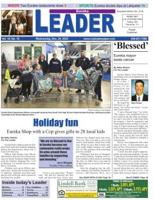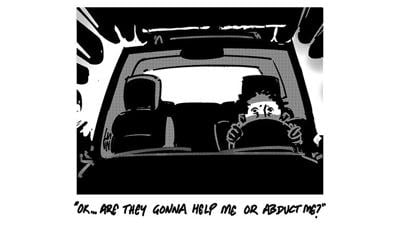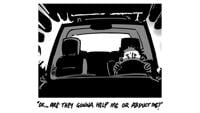Earlier this summer, the Missouri State Highway Patrol made an announcement that the agency was rolling out new vehicles with “ghost graphics,” giving them an almost invisible look during the day. The vehicles feature integrated hidden lights and decals that are barely visible during the day but light up when hit by a light at night.
The highway patrol reported that the vehicles would be used to curb activity like street racing, reckless driving and driving while intoxicated because it was too difficult to catch offenders in traditional patrol cars.
When the news about the ghost graphics came out, many people commented on social media that they thought the purpose for them was more about issuing speeding tickets than about keeping the public safe. Others said the attempt to camouflage the vehicles made them feel that police were positioning themselves as predators with the public their prey. Others argued that people tend to behave differently when they see a police vehicle in the area, so having highly visible patrol vehicles actually increased safety in neighborhoods. Others commented that they would be scared to pull over for what they couldn’t be certain was a police vehicle.
Those who supported the unmarked police vehicles accused the naysayers of just being worried they would have a harder time seeing police in time to slow down and avoid a speeding ticket. “You’re just mad you’re going to get more tickets!” I read repeatedly.
Well, I’m a slow driver and received my one and only speeding ticket in my life in 2009 (knock on wood), and I’m opposed to making police vehicles difficult to spot.
Many police vehicles have been getting harder and harder to identify for years, with changes in the lights and paint color making it harder to distinguish police vehicles from civilian ones. Many departments have ditched the classic contrasting black-and-white paint scheme on cruisers and transitioned to plain black SUVs with subtle decals. In 2024, about 23 percent of the SUVs sold in the United States were black. So, it can be difficult to quickly tell whether a police officer or civilian is driving that black SUV.
Growing up, those black and white police cars were easily identifiable, and you could spot one a mile away, which, in my opinion, is perfect. You should be able to identify a police vehicle quickly in an emergency, especially if you need to flag it down for help.
While driving around town with my toddler, I often hear squeals of delight from the backseat, “Mama, look, a firetruck!” “Mama, an ambulance!” “Mama, do you see the garbage truck?”
Do you know what I’ve never heard from the back seat? “Mama, look, a police car!”
We could be surrounded by 50 police vehicles and my child would have no clue because to him they look exactly like every other black Tahoe, Explorer or Durango.
I remember as a kid hearing Mister Rogers tell us to “look for the helpers” in an emergency. How can I tell my child to look for a helper if he can’t even tell what they look like?
And without a distinctive vehicle design, how can you be sure anymore if that person driving behind you with flashing lights truly is a police officer?
As a woman, I have heard warnings to NEVER pull over for any vehicle at night in a sparsely populated area if you can’t be certain it’s a police vehicle. Otherwise, you might end up kidnapped or dead in a ditch.
Anyone can buy blue and red bar lights. If you shop online, you can find hundreds of options, most for $100 or less. Car antennas, sirens, tactical vests, “police” patches and fake badges can also be purchased cheaply. The only thing that’s difficult to fake is that distinct black-and-white vehicle.
Many stories have circulated online lately about people impersonating officers, like one this past summer when a man pretending to be a police officer shot two Democratic lawmakers and their spouses in their homes in Minnesota.
The United States Department of Homeland Security recommends, but does not require, that local law enforcement agencies adopt a black-and-white vehicle color scheme for ease of visual identification nationwide. But if a department opts not to follow those recommendations, what can you do to make sure you’re safe?
If a vehicle is behind you attempting to pull you over and you are not sure it’s truly a police officer, it’s recommended you call 911 and speak with a dispatcher, explain the situation and they can verify whether it’s a real officer or not.
One of the most dangerous parts of a police officer’s job can be working a traffic stop at the side of the road. Officers or their vehicles are sometimes struck by inattentive motorists. This is even more prevalent when they have their emergency lights turned off, especially at night, when it can be difficult to see an all black vehicle on the side of the road.
Yes, drivers should be in their lanes at all times, but, unfortunately, that’s not the reality we live in. Why not help protect these officers by having their vehicles be as visible as possible?
If it were up to me, all police vehicles would have the distinctive black-and-white design and maybe even highly visible yellow stripes. In my opinion, no one should have any doubt in their mind who the helpers are.




